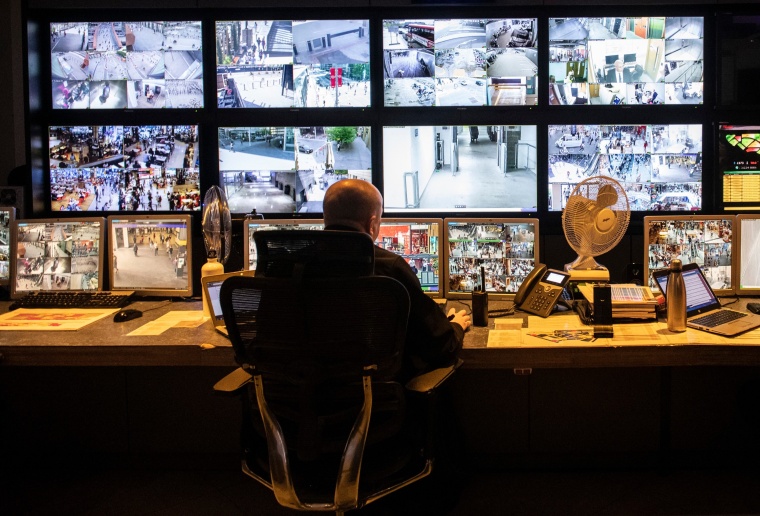Unified Physical Security Can Help Retailers Thrive in a Changing Environment
Retail has changed dramatically in a very short time. Digital transformation is delivering new business models around frictionless, multi-channel shopping and e-commerce and, alongside it, new security challenges. Video surveillance must keep up with these developments, but without software that unifies all the security aspects, it is impossible to get on top of the data.

Video surveillance technologies have also advanced with digitisation, creating new opportunities for retailers to use data gathered by video management systems (VMS) in combination with data from access control systems (ACS), automatic licence plate readers (ALPR), identity management systems, and more. Not only can they reduce shrink, but they can also improve operational efficiency and the shopper experience. Yet without a fully unified software solution, it’s hard to see how all these puzzle pieces fit together and make sense of the data.
When retailers can bring data from many different sources into one place, they get a complete picture of what’s happening in their environment. A unified, physical security platform that enables the integration of devices creates a connected store, which centralises management of the entire environment for better visibility, operations, and data intelligence.
How Retail Activities Benefit from Unification
1. Frictionless Shopping
The arrival of frictionless shopping solutions, such as curbside pickup and self-checkouts, has introduced new challenges for retail security teams. To combat them, unified security platforms offer a range of ways to keep up. Asset protection managers can easily review the video of self-checkout systems if theft is suspected and share it with law enforcement as needed. IT teams can spend less time updating software and focus their time on higher-priority tasks. And, of course, corporate security managers can work more effectively and efficiently with a full view of the connected store.
2. E-Commerce and Logistics
E-commerce has introduced new security concerns, as well as the need for inventory management logistics at distribution centres. Many people are involved in coordinating tasks to deliver each package and different individuals move through distribution centres who aren’t regular employees. ALPR technologies can play a key role in tracking who comes in and out of distribution centres and in retail locations, can record who has received products from a curbside pickup station. It can also help identify ORC suspects by checking to see if a vehicle is on record as having been involved in previous thefts.
3. Shrink
Shrink encompasses many types of loss, but it is primarily driven by external theft, including organised retail crime (ORC). The National Retail Security Survey shows that total shrink in 2022 reported by retailers is now almost a $ 100 billion problem. Beyond the loss of goods, in some cases retailers are having to deal with violent altercations with criminals. Retailers are implementing a variety of technologies to combat ORC, from artificial intelligence-based video analytics at point of sale (POS)/self-checkout to self-service locking cases, autonomous security robots and ALPR, and are also establishing dedicated ORC teams.
4. Cybersecurity
Today, retailers face escalating risks from cyber threats including fraud, malware, ransomware, and data breaches. Any device connected to a retailer’s network – whether it’s a smart IoT thermostat, an access control sensor, or a computer – has the potential to be a gateway for cyber criminals to access private data stored on servers connected to that network. Because today’s technology is so interconnected, data must be secured and monitored at every step.
When different solutions that were not designed to work together are put into place, it can quickly become difficult for teams to manage, upkeep, and scale. A unified security platform built with cybersecurity in mind enables retailers to secure their overall IT infrastructure and help mitigate risks of network penetration through one of their security devices.
As Video Surveillance Advances, Retailers Lean In
Retail use of video analytics is on the rise. These technologies are defined by the ECR Retail Loss Group as ʻsystems that use the capacity of computers to automatically interpret digital images to generate clearly defined and actionable outcomes.ʼ
In this use case, VMS systems can be set up to automatically trigger a request for a floor manager to open a new checkout line when a certain number of people are in the queue. Or, if the system detects a crowd forming at the self-checkout, it can notify specific staff members to see if customers need help.
Adding more cameras addresses some of the challenges of frictionless shopping. But it introduces new ones. When cameras are recording during store hours, retailers can collect hundreds of hours of video per store, every week. Simply storing that footage isn’t enough – retailers also need tools to make sense of it. A unified system allows retailers to manage data from all cameras alongside that from access control and ALPR systems, sensors, and maps, within one intuitive dashboard. Cross-referencing video footage with other analytics can reveal powerful insights.
Using these tools can deliver insights into the customer’s journey through the store and at checkout and improve their shopping experience, but keeping customers’ trust means protecting their privacy. It’s important to collect and store only the data required to improve security and customer experience and be transparent about what information and video footage is being collected and why. Advanced video management systems enable the secure sharing of video with law enforcement or other stakeholders absent of any personally identifiable information of bystanders captured on camera. And they authenticate and watermark video footage to ensure an unbroken chain of custody.
A Connected Store for the Omnichannel World
When physical security systems are siloed, it’s more difficult to get the full value of the data each collects. By leveraging a unified, connected store, retailers can combine and display data from all of their security systems in different formats such as customized dashboards, mobile apps, or a web client. When data is all in one place, new insights reveal themselves. Modern physical security systems enable retailers to customise dashboards that display data most relevant to particular users. Every department, from asset protection to marketing, will have different takes on data and bring a range of solutions to the table. This is where interdepartmental collaboration can be key to developing new strategies. A unified security platform can help retailers tap into the full potential of devices and equipment they already own, using data in new ways to streamline operations and gain insights. They can do more with less, delivering an optimal customer experience without sacrificing security or hitting the bottom line hard.
It all starts with a unification – a connected store for the omnichannel world.
Author: Steve Green, Business Development Manager at Genetec














